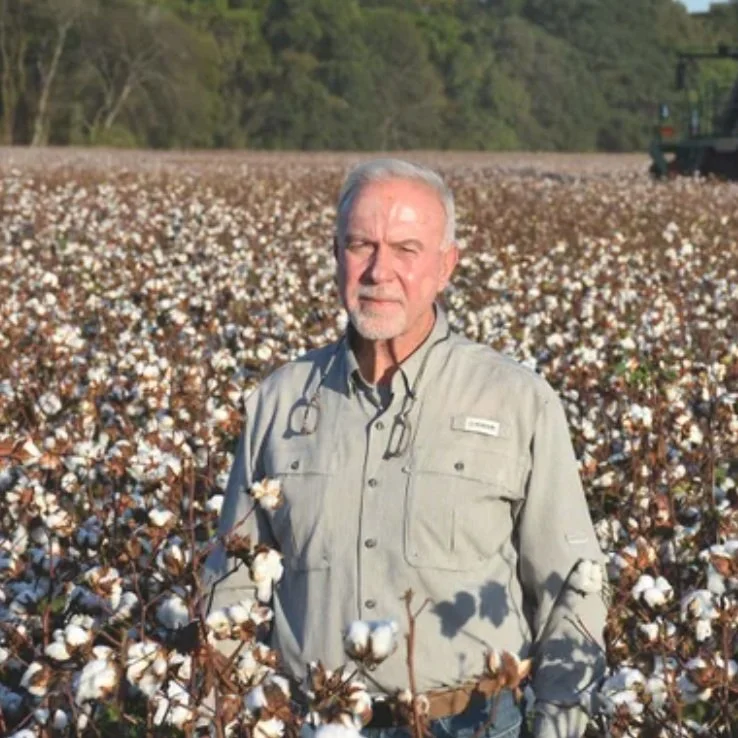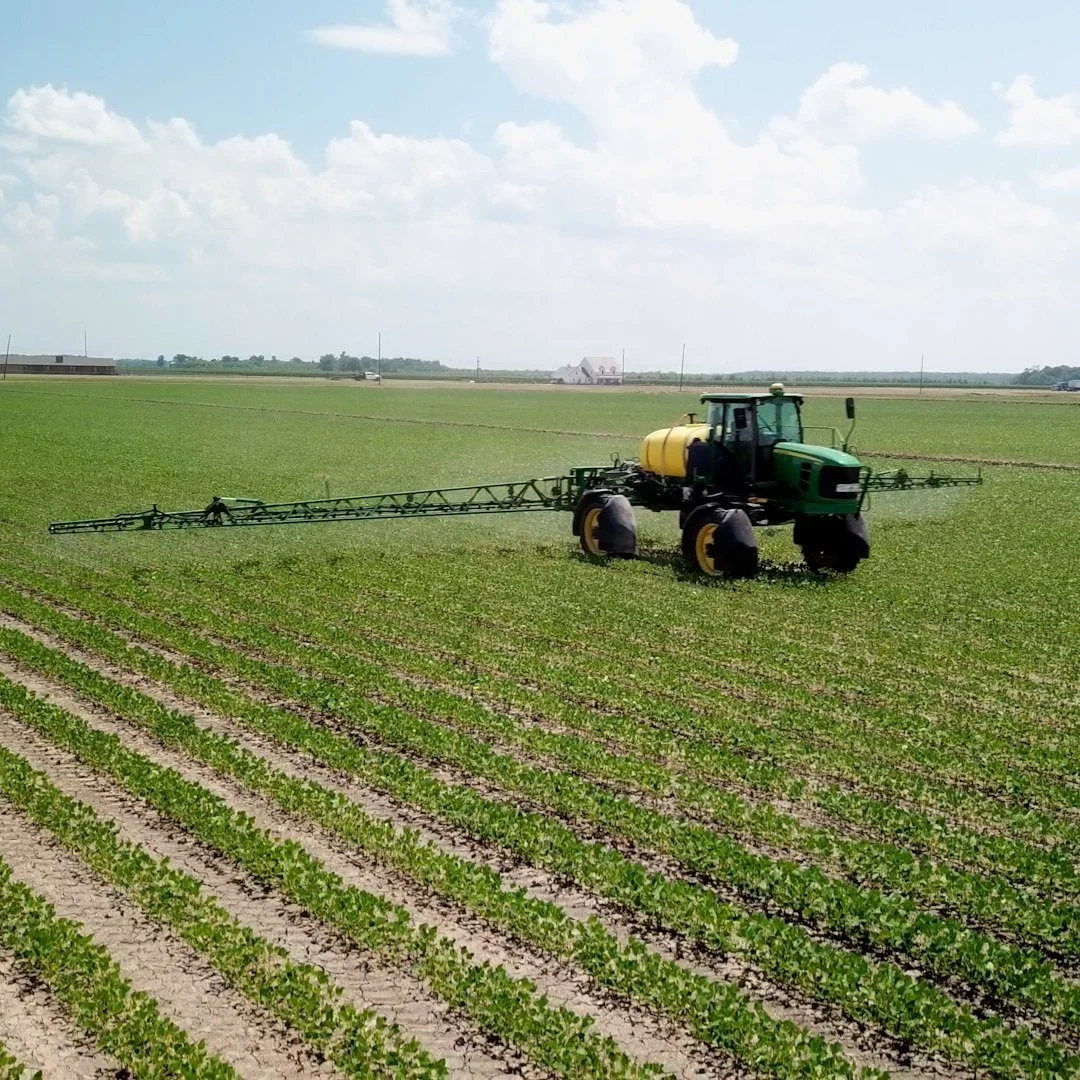USDA and the National Cotton Council both released their initial acreage projections for U.S. cotton plantings in 2024. The variations in those projections reflect the uncertainty remaining among cotton producers as they finalize their 2024 plans in the face of economic, market, regulatory, and weather challenges.
Read MoreLouisiana farmer Edward Greer who farms 8,500 acres of land in and around Rayville and Start, La has been selected the 2024 High Cotton Award winner from the Delta. He also raises rice, soybeans, wheat, grain sorghum and corn.
Read MoreLouisiana farmer Edward Greer who farms 8,500 acres of land in and around Rayville and Start, La., has been selected the 2024 High Cotton Award winner from the Delta. He also raises rice, soybeans, wheat, grain sorghum and corn.
Read MoreEarlier this month, the 9th Circuit Court of Appeals made the decision to vacate the label for over-the-top (OTT) use of dicamba, which will negatively impact Louisiana soybean and cotton producers.
In response to the court’s decision, Louisiana Farm Bureau President Jim Harper wrote a letter to EPA Administrator Michael Regan, emphasizing the consequences this ruling and requesting the enactment of the Existing Stocks Use Rule for OOT dicamba.
Read MoreDelegates to the National Cotton Council’s (NCC) upcoming annual meeting will review and approve resolutions to help U.S. cotton’s central organization guide the U.S. cotton industry in the coming year.
Read MoreThe U.S. Cotton Trust Protocol has tripled its grower membership in just three years, whose 1.7m acres now represent almost a quarter (23%) of the entire cotton-growing area of the United States. And while it has expanded enrolled planted acres exponentially, the program continues to drive progress across its six metrics. These are just some of the headline results published today in the U.S. Cotton Trust Protocol’s third Annual Report.
Read MoreIn late 2022, torrential rains hammered Louisiana’s farmers, laying waste to large swaths of cotton and soybean crops, especially in the northeast. Then, last year’s historic drought stunted growth and created a whole different set of problems.
Will Ratcliff, who farms about 3,500 acres in Tensas Parish, keenly felt both events, which came on top of historically high costs for fertilizer and fuel, driven in part by Russia’s invasion of Ukraine in 2022.
Read MoreCotton Incorporated and Nutrien Ag Solutions have teamed up to provide weekly weather update videos via the Cotton Cultivated website to make sure cotton producers have access to information they can count on. This weekly forecast is tailored specifically for cotton producers.
Read MoreCotton industry leaders Dave Ruppenicker, Drake Perrow, and Allen McLaurin were recognized for their contributions to the cotton industry during the annual meeting of Southern Cotton Growers and Southeastern Cotton Ginners Association Jan. 22 to 23 at the Westin Hilton Head Resort in Hilton Head Island, S.C.
Read MoreFor the 75th time, thousands of residents from Louisiana descended on the nation’s capital for the Washington Mardi Gras.
One of those who attended the festivities was Queen Cotton LXIX Amelia Mickal.
Read MorePrices (old crop March 2024 futures) have finally broken to the upside and now stand within the previous 83 to 89 cents range we had for months prior to the most recent setback to mostly 74 to 82 cents. But, that old 83 to 89 cents range will now become a barrier. That’s the way markets work, and it may be a tough nut to crack. Note, for example, that price was down sharply on Jan. 26.
Read MoreVariety selection is one of the most important decisions a cotton producer will make. The variety and its associated traits set the stage for harvest at the time of planting. All other input decisions affect the performance of the variety selected. Since the introduction of transgenic cottons and the accompanying increases in seed costs and associated technology fees, variety selection has become increasingly important. Seed selection is the one decision that is not influenced by environmental factors. Therefore, choosing a high-yielding variety with acceptable fiber quality that is adapted to local growing conditions should be considered carefully because of the tremendous importance the decision plays for the entire season.
Read MoreThe U.S. Cotton Trust Protocol celebrated notable progress in 2023, with an increase in enrolled planted cotton acres – up 25% from the previous year. Since the program’s launch in 2020, grower enrollment has successively increased by 120%, further advancing the Trust Protocol’s commitment to meeting environmental goals while sourcing sustainable, American grown cotton.
Read MoreDr. David Fang, geneticist for USDA-ARS at the Cotton Fiber Bioscience Research Unit in New Orleans, is the 2023 Cotton Genetics Research Award recipient.
The announcement was made during the 2024 Beltwide Cotton Improvement Conference, which convened as part of the 2024 Beltwide Cotton Conferences in Fort Worth.
Read MoreThis month’s 2023/24 U.S. corn outlook is for greater production, larger food, seed, and industrial use (FSI), increased feed and residual use, and higher ending stocks. Corn production is estimated at a record 15.3 billion bushels, up 108 million as an increase in yield to a record 177.3 bushels per acre is partly offset by a 0.6-million acre decline in harvested area.
Read More














